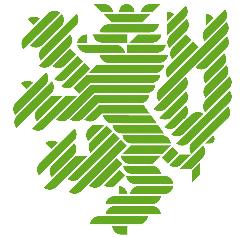Bergische Universität Wuppertal
Fachbereich C: Mathematik und Naturwissenschaften
Lehrstuhl für Angewandte Mathematik und Numerische Analysis
Prof. Dr. Matthias Ehrhardt
Dipl.-Math Alexander Schranner
|
Course in the Winterterm 2009/2010:
Introduction to Numerical Methods for Computer Simulation
Outline
§ 0. Introduction
- Example 1: Integral Recursion
§ 1. Error Analysis
1.1 Number Representation: Floating-Point and Roundoff
- Definition 1: Floating Point
- Example 1: Normalised Floats - decimal
- Example 2: Normalised Floats - dual
- Definition 2: Machine Numbers
- IEEE-Standard 754
- Example 3: Short real
- Rounding
- Definition 3: Round to nearest
- Definition 4: Machine precision
- Example 0.1 revisited
- Floating point operations
1.2 Roundoff Error Analysis
- Forward vs. Backward Analysis
- Definition 5: Backward Analysis
- Example 4: Backward Analysis for ..
- Horner-Scheme
- Algorithm 1: Horner-Scheme
1.3 Error propagation and condition
- Definition 6: Condition numbers
- Example 5:
- Condition plus roundoff error
- Error in Algorithm
- Definition 7: Acceptable result
- Definition 8: Well behaved / Numerically stable algorithm
§ 2. Vectors and Matrices
2.1 Notations
2.2 Determinant, Inverse, Eigenvalues
2.3 Special matrices
- Definition 1: symmetric/hermitian matrix
- Definition 2: orthogonal/unitary matrix
- Definition 3: positive (semi)definite matrix
2.4 Norms
- Definition 4: (vector) norm
- Definition 5: matrix norm
- Definition 6: subordinate matrix norm lub
- Definition 7: spectral radius
- Definition 8: condition of a matrix
2.5 Elementary matrices
- Scaling
- Transposition
- Permutation
- Row/column operations
2.6 BLAS Package
§ 3. Direct Methods for Linear Systems
3.1 Gaussian Elimination and LU-Decomposition
- Algorithm 1: Forward Substitution
- Algorithm 2: Backward Substitution
- Algorithm 3: Gaussian Elimination without pivoting
- Example 1:
- Theorem 1: LU-Decomposition
- Algorithm 4: LU-Decomposition
- Complexity
- Pivoting
- Example 2:
- Theorem 2:
- Cholesky-Decomposition
- Theorem 3:
- Algorithm 5: Cholesky-Decomposition
3.2 Condition and Roundoff Error
- Residual
- Roundoff errors in decompositions
3.3 Linear Least Squares
- Problem description
- Example 3: Radio-active decay
- Normal Equations
- Theorem 4:
- Condition of the least squares problem
- Computation
- Example 4:
- Householder Transformation and QR-Decomposition
- Theorem 5: Householder transformation
§ 4. Iterative Methods for Linear Systems
Motivation forr iterative methods
4.1 Illustrative Example
- Example: Poisson problem on unit square
4.2 Classical iterative methods
- Properties of iteration matrix
- Theorem 1: Convergence of classical methods
- Theorem 2: Speed of convergence
- Jacobi method
- Definition 1: strong row/column sum criterion
- Gauss-Seidel method
- Relaxation methods
- under/over-relaxation
- successive overrelaxation (SOR) method
- Application to illustrative example
- Iterative refinement
4.3 Conjugate gradient (CG) method
- Krylov space
- Krylov-subspace methods
- energy norm
- A-orthogonal basis
- Theorem 3: basis of CG method
- method of conjugate directions
- Algorithm 1: Conjugate gradient method
- Interpretation via optimization
- preconditioning
- incomplete Cholesky decomposition
4.4 GMRES method
- method of generalised minimal residuals
§ 5. Methods for Nonlinear Systems
5.1 Newton's method
- The Univariate Case
- Algorithm 1: Bisection
- Algorithm 2: Newton's method
- Definition 1: local and global convergence
- Definition 2: convergence of order p
- The Multivariate Case
- Algorithm 3: Newton-Raphson method
- Theorem 1: Convergence of multivariate Newton method
- Theorem 2 (newton-Kantorovich):
5.2 Simplified Newton method
- Theorem 3: Convergence of simplified multivariate Newton method
- Broyden's rank one method
5.3 Modified Newton method
- Algorithm 4: modified Newton method
- Theorem 4: Convergence of modified multivariate Newton method
- natural scaling
5.4 Gauss-Newton scheme
- Algorithm 5: Gauss-Newton method
- Theorem 5: Convergence of multivariate Gauss-Newton method





